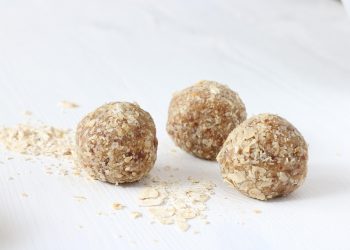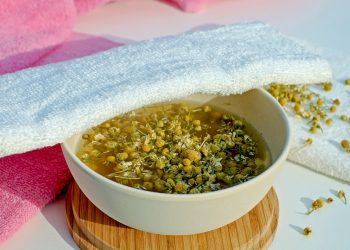Paleo and Keto diets have gained immense popularity, but understanding their key differences can help you choose the right one for your lifestyle. If you’re on a quest for better health or to shed some pounds, knowing how these two diets stack up is crucial. Let’s dive into the nitty-gritty of both these dietary approaches.
Contents
What Are the Paleo and Keto Diets?
The Paleo diet is all about eating like our ancestors. It emphasizes whole foods, focusing on ingredients that could be hunted or gathered. Imagine lush greens, lean meats, fish, nuts, and seeds—all free from additives and preservatives. The idea is simple: if it wasn’t available during the Paleolithic era, it’s off the table.
The Keto diet, on the other hand, is a high-fat, low-carb approach designed to push your body into a state of ketosis. Here, your body burns fat for fuel instead of carbohydrates. You’ll indulge in avocados, butter, and fatty fish while dramatically reducing your intake of sugars and grains.
Both diets have their merits, but they cater to different needs and goals. Let’s break down the five key differences that set them apart.
1. Carbohydrate Intake
Paleo: A Balanced Approach
In the Paleo diet, carbohydrates come primarily from fruits, vegetables, nuts, and seeds. There’s no strict limit on carbs, but the focus is on healthier options. This allows for a more balanced intake, which can help maintain energy levels throughout your day.
Keto: The Carb Cutoff
Keto is all about slashing those carbs. You aim for about 5-10% of your daily calories to come from carbohydrates. This drastic reduction forces your body into ketosis, which can lead to rapid weight loss. However, it may leave you feeling sluggish initially as your body adjusts.
Bottom Line: If you prefer a more flexible approach, Paleo might be for you. If you’re ready to commit to a strict low-carb lifestyle for quick results, Keto could be your answer.
2. Fat Consumption
Paleo: Healthy Fats Are Key
Paleo encourages healthy fats but doesn’t push you to eat them in excess. You’ll enjoy avocados, olive oil, and nuts, but your meals will also include lean meats and plenty of veggies. It’s about balance and nourishment rather than just fat.
Keto: Fat is Fuel
In Keto, fat is your friend and primary fuel source. You’ll consume about 70-80% of your daily calories from fats. This means you can indulge in creamy cheeses, butter, and fatty cuts of meat. The goal is to keep your body in ketosis, burning fat as its main energy source.
Bottom Line: If you love a variety of foods and prefer moderation, Paleo fits the bill. If you’re ready to embrace fat and want to see quick results, Keto is your go-to.
3. Food Choices
Paleo: Whole Foods Only
Paleo is strict about food quality. You’ll avoid processed foods, dairy, grains, and refined sugars. The focus is on whole, natural foods sourced from nature. Think fresh produce, grass-fed meats, and wild-caught fish.
Keto: Flexibility with Processed Foods
Keto allows for some processed foods, provided they fit within the carb limit. You might find sugar-free options, artificial sweeteners, and even pre-packaged snacks that cater to the diet. However, be cautious—many of these options may not be the healthiest.
Bottom Line: If you’re committed to a clean, whole-food diet, Paleo is your best bet. If you’re okay with some processed foods as long as they fit the macros, Keto might work for you.
4. Health Benefits
Paleo: Balanced Wellness
Embracing the Paleo lifestyle can lead to improved digestion, better energy levels, and reduced inflammation. Many people report feeling more vibrant and healthier overall. It’s also easier to maintain in the long run for many.
Keto: Quick Weight Loss
Keto often leads to rapid weight loss, especially in the initial phases. The state of ketosis can help curb hunger pangs, making it easier to stick to a calorie deficit. However, it may not provide long-term sustainability for everyone.
Bottom Line: If you’re looking for longevity and balanced health, Paleo shines. If your primary goal is immediate weight loss, Keto may deliver faster results.
5. Sustainability
Paleo: A Lifestyle Change
Paleo can be more sustainable for many people. Since it encourages a variety of foods and doesn’t restrict calories as severely, you may find it easier to maintain over time. It promotes a healthy relationship with food.
Keto: Short-Term Commitment
Keto can be challenging to stick with long-term due to its restrictive nature. Many find it hard to maintain a diet so low in carbs, leading to what’s commonly known as “keto fatigue.” Once you’re off it, regaining weight can be a concern.
Bottom Line: If you’re seeking a lifestyle change that feels manageable, Paleo is likely your best bet. If you’re looking for a short-term solution, Keto could help you reach your goals quickly.
Conclusion
So there you have it: the five key differences between Paleo and Keto diets. Each has its unique approach and benefits, so the choice ultimately depends on your personal goals, lifestyle, and preferences.
Before making a significant dietary change, consult with a healthcare professional or a registered dietitian. They can help tailor a plan that suits your needs and supports your journey to health.
Bottom Line
Choosing between Paleo and Keto doesn’t have to be overwhelming. Listen to your body, assess your goals, and pick what resonates with you. The most important thing is to find a diet that you can enjoy and sustain.
Ready to make a change? Whether you go Paleo or Keto, commit to nourishing your body and embracing a healthier lifestyle. You deserve it!
FAQ
1. Can I combine Paleo and Keto?
Yes, some people find success by blending elements from both diets, focusing on whole foods while keeping carbs low.
2. Will I lose weight on either diet?
Both diets can lead to weight loss, but results vary based on individual adherence and lifestyle.
3. Is one diet healthier than the other?
It depends on your personal health needs. Paleo may be better for long-term wellness, while Keto can provide quick weight loss.
For more detailed information, you can explore resources from Harvard Health, Mayo Clinic, and the American Heart Association.
Get Your FREE Natural Health Guide!
Subscribe now and receive our exclusive ebook packed with natural health tips, practical wellness advice, and easy lifestyle changes — delivered straight to your inbox.















